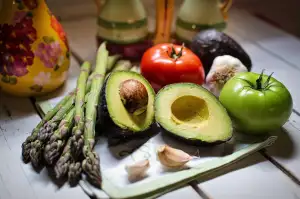Perfectly Fried Eggs: A Step-by-Step Guide to Mastering the Art of Cooking Flawless Fried Eggs

Fried eggs are a classic breakfast staple loved by many for their simplicity and versatility. Whether you prefer them sunny-side up, over-easy, or well-done, mastering the art of cooking flawless fried eggs is essential for any home cook. With just a few simple steps, you can achieve perfectly cooked eggs with a golden, crispy edge and a soft, runny yolk. In this step-by-step guide, we will walk you through the process of making delicious fried eggs that will impress your family and friends every time they sit down to breakfast. So let's get cracking!
Gather the necessary ingredients
To make perfectly fried eggs, you will need just a few simple ingredients. First and foremost, you'll need fresh eggs. Look for eggs with intact shells and a bright yolk. You'll also need cooking oil or butter for frying the eggs. Opt for a neutral-flavored oil like vegetable or canola oil, or use butter for a rich and flavorful touch. Additionally, you may want to gather some salt and pepper to season the eggs to your liking. With these basic ingredients in hand, you're ready to embark on your journey to mastering the art of cooking flawless fried eggs.
Preparing the frying pan
Preparing the frying pan is an essential step in achieving perfectly fried eggs. Start by selecting a non-stick frying pan to prevent the eggs from sticking. Ensure the pan is clean and dry before use. Next, add a small amount of cooking oil or butter to the pan, spreading it evenly across the surface. This will prevent the eggs from sticking and help them cook evenly. Make sure not to use too much oil or butter as it may result in greasy eggs. Once the pan is prepared, move on to heating the oil or butter to the appropriate temperature for frying the eggs.
Heating the oil or butter
Heating the oil or butter is a crucial step in achieving perfectly fried eggs. Start by selecting a frying pan that is non-stick and has a flat bottom. Place the pan on the stove over medium heat. Add a tablespoon of oil or butter to the pan, allowing it to melt and coat the surface evenly. Heating the oil or butter properly ensures that the eggs cook evenly and do not stick to the pan. Be cautious not to let the oil or butter smoke, as this can result in a burnt taste. Remember, proper heating of the oil or butter sets the foundation for deliciously fried eggs.
Cracking the eggs into the pan
Cracking the eggs into the pan is a crucial step in achieving perfectly fried eggs. Start by ensuring that your frying pan is properly prepared and heated. Once the pan is hot, carefully crack the eggs one at a time into a small bowl or directly into the pan. This allows you to inspect each egg for freshness and any potential shell fragments. Gently slide the cracked egg into the pan, being careful not to break the yolk. Repeat this process for as many eggs as desired, leaving enough space between them to prevent them from running together.
Seasoning the eggs
Seasoning the eggs is a crucial step in achieving perfectly fried eggs with enhanced flavor. Once the eggs are cracked into the pan, it's time to add seasoning to elevate their taste. Salt and pepper are classic choices that bring out the natural flavors of the eggs. Sprinkle a pinch of salt and a dash of freshly ground black pepper over the eggs evenly. The salt helps to enhance the overall taste, while the pepper adds a subtle hint of spiciness. However, feel free to experiment with other seasonings such as herbs like chives or parsley, or even spices like paprika for an extra kick. Remember to be mindful of not overpowering the delicate taste of the eggs with too much seasoning. A light touch is key to allowing the natural flavors to shine through.
Cooking the eggs to desired doneness
Cooking the eggs to desired doneness is a crucial step in achieving perfectly fried eggs. The cooking time will depend on personal preference, whether you prefer your eggs runny or fully cooked. For a sunny-side-up egg with a runny yolk, cook it for about 2-3 minutes on medium-low heat. If you prefer a firmer yolk, cook it for an additional minute. To cook over-easy or over-hard eggs, gently flip them using a spatula and cook for an additional 1-2 minutes. Remember to adjust the cooking time based on your stove's heat intensity to avoid overcooking the eggs.
Flipping the eggs (optional)
Serving and enjoying the fried eggsServing and enjoying the fried eggs is the final step in this culinary adventure. Once the eggs are cooked to perfection, carefully transfer them onto a plate using a spatula. The golden yolks and delicate whites should be visually appealing. To enhance the flavor, sprinkle some freshly ground black pepper or a pinch of salt over the eggs. You can also add some chopped herbs like parsley or chives for an extra burst of freshness. Serve the fried eggs alongside your favorite breakfast sides such as crispy bacon, buttered toast, or sautéed vegetables. The creamy yolks will create a luscious sauce that can be enjoyed by dipping the sides into it. Remember to savor each bite and appreciate the simplicity and deliciousness of perfectly fried eggs!
Tips and variations for making fried eggs
Tips and Variations for Making Fried Eggs:
- Experiment with different oils or fats: While butter and vegetable oil are commonly used, try using olive oil or bacon fat for added flavor.
- Control the heat: Adjust the temperature to achieve the desired texture. Lower heat results in a runnier yolk, while higher heat creates a firmer yolk.
- Add toppings: Sprinkle grated cheese, chopped herbs, or cooked bacon on top of the eggs before they finish cooking for extra flavor and texture.
- Try different seasonings: Besides salt and pepper, explore other seasonings such as paprika, garlic powder, or chili flakes to enhance the taste of your fried eggs.
- Get creative with presentation: Serve your fried eggs on toast, alongside sautéed vegetables, or as part of a breakfast sandwich for a more substantial meal.
- Experiment with cooking techniques: Aside from traditional sunny-side-up or over-easy eggs, try making scrambled eggs or an omelet using similar ingredients and techniques.
- Use non-stick pans: If you're concerned about sticking or want to use less oil, opt for a non-stick frying pan to ensure easy flipping and removal of the eggs.
Remember that practice makes perfect when it comes to frying eggs. Don't be afraid to experiment with different methods and flavors until you find your preferred style of perfectly fried eggs!
In conclusion, mastering the art of cooking flawless fried eggs is a skill that can elevate your breakfast game to new heights. By following this step-by-step guide, you can achieve perfectly cooked eggs every time. Remember to gather fresh eggs, prepare a well-seasoned frying pan, and heat the oil or butter just right. Crack the eggs gently into the pan and season them to your liking. Cook them to your desired doneness, whether it's runny yolks or fully cooked. Flipping the eggs is optional but can add an extra touch of finesse. Finally, serve and enjoy your delicious fried eggs with toast or other breakfast favorites. With these tips and variations in mind, you'll be able to experiment and create your own signature fried egg dishes. So go ahead and start your culinary adventure with perfectly fried eggs!
Published: 09. 02. 2024
Category: Recipes



